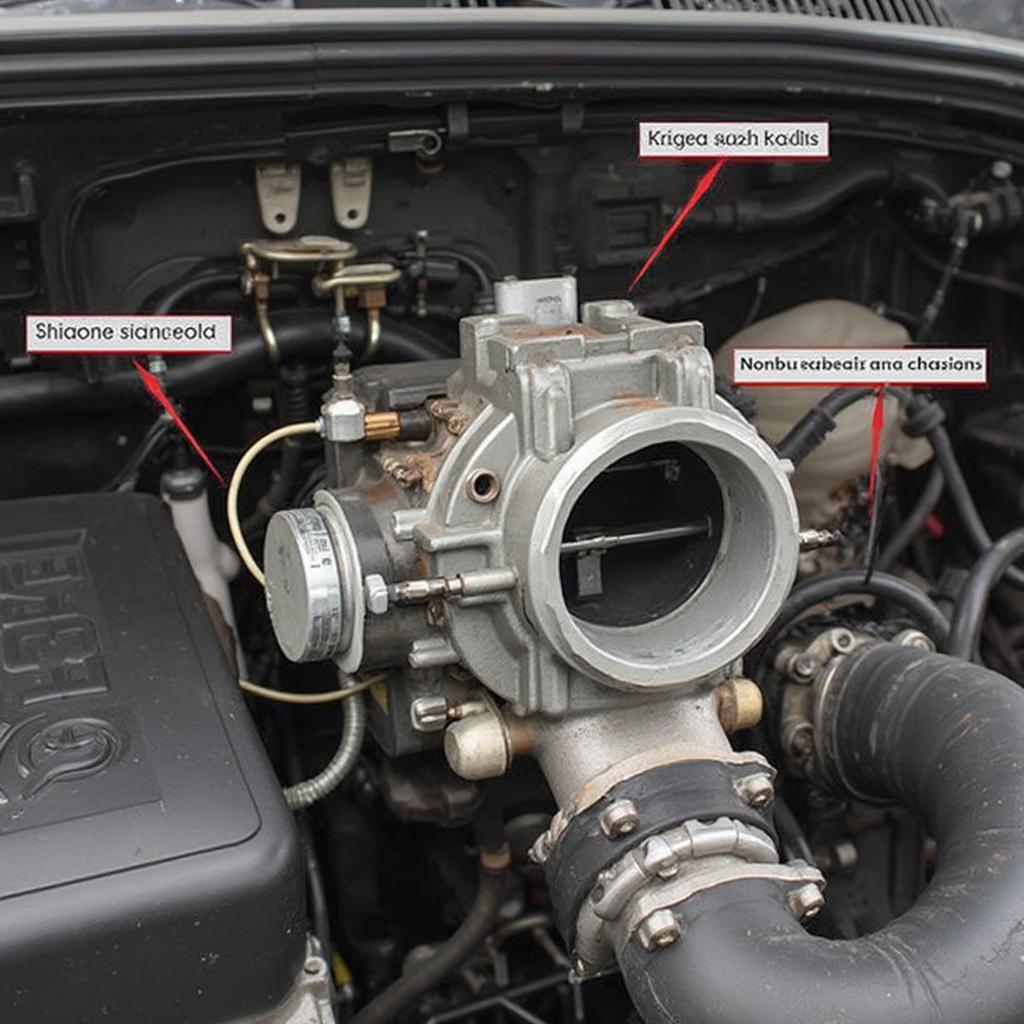The OBD2 throttle position is a critical parameter for engine management and performance. This article delves into the intricacies of the OBD2 throttle position sensor, its role, common issues, and how it interacts with your vehicle’s diagnostic system. We’ll explore how understanding this sensor can help you maintain optimal engine performance and diagnose potential problems.
 OBD2 Throttle Position Sensor Explained
OBD2 Throttle Position Sensor Explained
What is OBD2 Throttle Position?
The OBD2 throttle position refers to the angle of the throttle plate, which controls the amount of air entering the engine. The throttle position sensor (TPS) measures this angle and sends a signal to the engine control unit (ECU). This signal is crucial for the ECU to calculate the correct air/fuel mixture and ignition timing, ensuring optimal engine performance. The throttle position sensor obd2 is a vital component for modern vehicles. A malfunctioning TPS can lead to a variety of driveability issues.
How Does the OBD2 System Use Throttle Position Data?
The ECU uses the throttle position data to determine engine load. When you press the accelerator pedal, the throttle plate opens, allowing more air into the engine. The TPS sends a signal to the ECU corresponding to the throttle plate’s angle. The ECU then adjusts the fuel injection and ignition timing to match the increased airflow. This process is essential for smooth acceleration and optimal power delivery. If the TPS malfunctions, it can send incorrect signals to the ECU, resulting in poor fuel economy, rough idling, and hesitation during acceleration. Understanding how the ECU interprets this data is key to diagnosing performance problems.
Why is OBD2 Throttle Position Important?
The accurate measurement of the obd2 throttle position is essential for various engine functions, including fuel efficiency, emissions control, and transmission shifting. The ECU uses this data to optimize fuel delivery and spark timing, resulting in better fuel economy and reduced emissions. For automatic transmissions, the throttle position signal helps determine the appropriate shift points. Issues like a faulty TPS can trigger trouble codes such as obd2 p0120, indicating problems with the throttle/pedal position sensor/switch “A” circuit.
Common Problems with OBD2 Throttle Position Sensors
A faulty TPS can cause various driveability problems. These include:
- Rough idling
- Hesitation or stumbling during acceleration
- Poor fuel economy
- Check Engine Light illumination
- Sudden surges or drops in engine speed
- Transmission shifting problems
“A failing TPS can mimic other issues, leading to unnecessary repairs. Accurate diagnosis is crucial,” says automotive expert John Miller, ASE Certified Master Technician.
Diagnosing OBD2 Throttle Position Sensor Issues
Diagnosing a faulty TPS usually involves using an OBD2 scanner to read trouble codes and monitor live data. The scanner can display the throttle position voltage and allow you to observe its response to accelerator pedal movement. A faulty TPS might show erratic voltage readings or a failure to respond smoothly to changes in throttle position. Certain codes, like obd2 0229, point directly to throttle/pedal position sensor/switch “B” circuit range/performance problems.
Troubleshooting OBD2 Throttle Position Problems
If you suspect a faulty TPS, here are some steps you can take:
- Check for loose or damaged wiring connections to the TPS.
- Inspect the throttle body for any obstructions or damage.
- Use an OBD2 scanner to check for trouble codes and monitor live data.
- Test the TPS with a multimeter to check its resistance and voltage output.
- Replace the TPS if necessary. Sometimes, specific vehicle models, such as those affected by the nissan obd2 code p2135, require specific diagnostic procedures.
Conclusion
Understanding the OBD2 throttle position is crucial for maintaining optimal engine performance. The TPS plays a vital role in controlling the air/fuel mixture and ignition timing, and a malfunctioning TPS can lead to a range of driveability issues. Using an OBD2 scanner and performing regular checks can help identify and address TPS problems early, ensuring your vehicle runs smoothly and efficiently. This allows you to avoid potential problems related to the bosch obd2 1100 throttle position.
FAQ
-
What does the OBD2 throttle position sensor do? It measures the angle of the throttle plate and sends a signal to the ECU.
-
What are the symptoms of a bad throttle position sensor? Rough idling, hesitation during acceleration, poor fuel economy, and a Check Engine Light are common signs.
-
How do I test an OBD2 throttle position sensor? You can use an OBD2 scanner to monitor live data or a multimeter to check its resistance and voltage.
-
Can I clean a throttle position sensor? In some cases, cleaning the throttle body and the sensor can resolve issues related to carbon buildup.
-
How much does it cost to replace a throttle position sensor? The cost varies depending on the vehicle, but it is typically a relatively inexpensive repair.
-
How does the OBD2 system use the throttle position information? The ECU uses the throttle position data to calculate the appropriate fuel injection and ignition timing, optimizing engine performance.
-
What happens if the throttle position sensor fails completely? The ECU may enter a “limp mode” to protect the engine, significantly limiting performance.
You can find more information about various OBD2 codes and troubleshooting tips on our website. Explore topics such as oxygen sensors, mass airflow sensors, and other crucial components of your vehicle’s engine management system.
Need help with your car’s OBD2 system? Contact us via WhatsApp: +1(641)206-8880, Email: [email protected] or visit our office at 789 Elm Street, San Francisco, CA 94102, USA. Our 24/7 customer support team is ready to assist you.